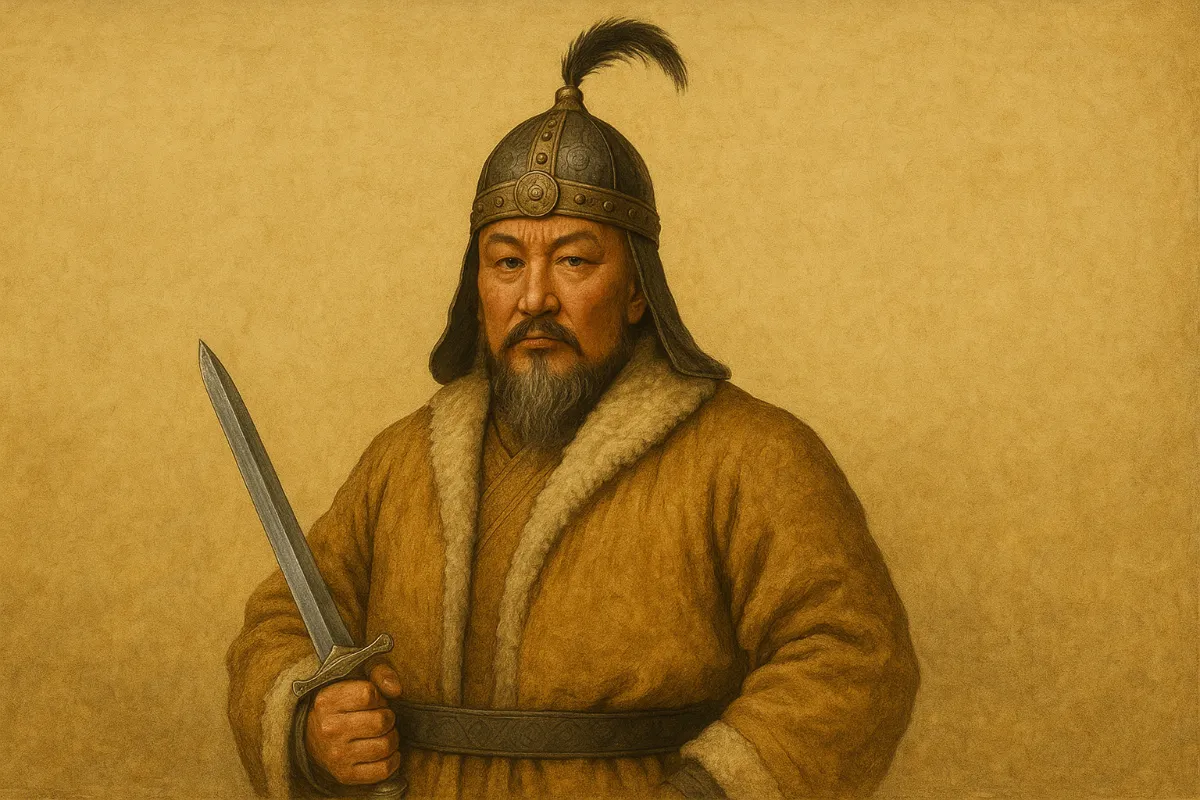Genghis Khan and the Making of the Modern World
Genghis Khan and the Making of the Modern World by Jack Weatherford is a refreshing read. The book is about the rise and influence of Mongol leader Genghis Khan and his successors, and their influence on European civilization.
Genghis Khan was born Temüjin, also known as Chinggis Khan.
Genghis Khan (1162 – August 1227) was the founder and first khan of the Mongol Empire. After spending most of his life uniting the Mongol tribes, he launched a series of military campaigns, conquering large parts of China and Central Asia.
His life was a tale of resilience, cunning, and sheer determination. He led the nomadic tribes of Mongolia,1 and carved out one of the largest contiguous empires the world has ever known, stretching from Eastern Europe to the Sea of Japan. His leadership, military prowess, and vision altered the course of world history, leaving a legacy that still reverberates through modern civilization.
Following his father’s death, his family was abandoned by their clan, forcing them into a life of poverty. These early experiences of betrayal and survival in the harsh Mongolian steppes played a crucial role in shaping him into a future leader who would be merciless in his pursuit of loyalty and unity.
His revolutionary approach to warfare set him apart from other conquerors. His military campaigns were characterized by rapid mobility, the use of highly skilled horsemen, and brilliant strategies that often outmaneuvered larger, more established armies. The Mongol army comprised small, fast units that could strike quickly and with devastating effect.
His use of psychological warfare was not just a tactic, it was a strategic tool. His employment of terror to demoralize his enemies and his reputation for ruthlessness led many cities and kingdoms to surrender without a fight, knowing that resistance would result in total annihilation.
Another key to his success was his meritocratic leadership. He promoted individuals based on their abilities rather than their noble birth. This improved the efficiency of his military forces and fostered deep loyalty among his generals and soldiers. Under Genghis Khan’s direction, the Mongol army became a highly disciplined and fearsome force capable of overcoming any challenge.
He was an innovative and pragmatic ruler. Once he had conquered a territory, his approach to governance was markedly different from his conduct in warfare. He understood the importance of stability and trade and implemented a series of administrative reforms to manage his vast empire. His system of government was built on the principles of meritocracy, loyalty, and efficiency.

One of Genghis Khan’s key innovations was a postal relay system that played a pivotal role in integrating the vast and diverse territories of the Mongol Empire. This system, facilitating rapid communication and the efficient movement of information, goods, and military orders, was a testament to his governance strategy and its significance in his rule.
He also promoted religious tolerance within his empire, allowing people of different faiths—Muslim, Christian, Buddhist, or shamanist—to practice their religion freely. This was a pragmatic approach, as it helped to prevent rebellion and fostered loyalty among the diverse peoples under his rule. Under his leadership, the Mongol Empire became a cosmopolitan and multi-ethnic empire connected by trade routes and shared economic interests.
The Mongol Peace facilitated the exchange of ideas, technologies, and goods across the Eurasian continent. Under Mongol protection, the Silk Road2 became a vibrant network of trade routes that allowed for the movement of silk, spices, gunpowder, and other commodities between Europe, the Middle East, and China.
Moreover, Genghis Khan’s emphasis on meritocracy, religious tolerance, and communication networks left an indelible mark on the political and administrative systems of the regions he conquered. Many of the innovative practices he introduced were embraced by subsequent empires and civilizations, shaping governance in Europe, the Middle East, and Asia for generations.
References & Updates
Fall of Civilizations Podcast has a brilliant almost 7-hour episode on The Mongols - Terror of the Steppe.
- May 1, 2025: Genghis Khan: The Secret History of the Mongols is a mini TV Series.
-
Mongolia is a landlocked country in East Asia, bordered by Russia to the north and China to the south and southeast. It covers an area of 1,564,116 square kilometres, with a population of 3.5 million, making it the world’s most sparsely populated sovereign state. Mongolia is the world’s largest landlocked country that does not border an inland sea, and much of its area is covered by grassy steppe, with mountains to the north and west and the Gobi Desert to the south. Ulaanbaatar, the capital and largest city, is home to roughly half of the country’s population. ↩
-
The Silk Road was a network of Eurasian trade routes active from the second century BCE until the mid-15th century. Spanning over 6,400KM, it played a central role in facilitating economic, cultural, political, and religious interactions between the Eastern and Western worlds. The name “Silk Road” was first coined in the late 19th century, but some 20th- and 21st-century historians instead prefer the term Silk Routes, on the grounds that it more accurately describes the intricate web of land and sea routes connecting Central, East, South, Southeast, and West Asia as well as East Africa and Southern Europe. ↩